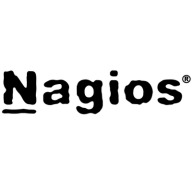eG Enterprise is a comprehensive performance monitoring tool that monitors applications, infrastructure, and networks. eG Enterprise offers a complete performance management solution that delivers diagnosis and automated IT auditing, and offers extensive reporting to test application latencies, storage hotspots, network failures, server incompetencies, bottlenecks, user experience (UX) concerns, and more.
eG Enterprise monitors an organization’s total IT ecosystem and applications throughout every layer and all tiers and will take a deep dive to discover where a problem began, faster than any other solution. eG Enterprise is a complete solution that thoroughly monitors the end-user relationship for just about every IT deployment available, such as cloud-based microservices applications, enterprise applications, on-premise monolithic applications, and digital workspaces.
eG Enterprise is a flexible solution and can be deployed in various circumstances, wherever the digital experience of the user needs to be managed and IT infrastructures and applications need to be monitored. eG Enterprise is effective from legacy on-premise deployments to the most cloud-centric ecosystem in the marketplace today.
eG Enterprise Features
-
Application Performance Monitoring (APM): The solution is able to provide monitoring to discover, diagnose, and repair application performance problems so the end user is never affected.
-
Infrastructure monitoring: Users have full transparency to clearly visualize what is occurring with recent deployments and immediately diagnose network, database, and server problems.
-
Digital workspace monitoring: Workspaces are continually monitored to maintain the highest levels of productivity at all times. Users can easily monitor disconnects, logons, slowdowns, complete sessions, and more.
-
Enterprise application monitoring: Applications that do not perform as expected may result in significant losses for an organization. eG Enterprise is able to monitor many of today’s popular applications, such as PeopleSoft, SAP, Sharepoint, Siebel, and Office 365. Organizations are able to quickly identify underperforming applications, discover and diagnose problems, and remediate issues to ensure that optimal levels of productivity and profitability are being maintained at all times.
-
Cloud Monitoring: eG Enterprise provides effective monitoring for all of an organization's cloud infrastructures, including public, hybrid and private. eG Enterprise is able to facilitate the concise mapping of the relationships between tiers and discover the reasons for performance problems immediately before they reach the end user. eG Enterprise can be deployed on premises or as a SaaS-based solution.
Reviews from Real Users
“The product makes data collection easy. It's simple to set up. The algorithm is the most valuable aspect of the solution. In a few minutes after the installations, we can get insights from my technical environment. After a few minutes, I can get some valuable insights to make decisions.” - Anderson L., LatAm Presales Analyst at CLM
“Some of the best features of eG are, in terms of APM, they have complete modules between application performance monitoring, server monitoring, and even storage and network-based monitoring. The UI is also quite good. They have some standard AI-based capabilities, even though it's not quite as advanced when compared to Dynatrace. eG has some good, basic APM capabilities.” - A PeerSpot user who is a Consultant at a tech services company
Nagios XI provides monitoring of all mission-critical infrastructure components, including applications, services, operating systems, network protocols, systems metrics, and network infrastructure. Third-party add-ons provide tools for monitoring virtually all in-house and external applications, services, and systems.
Nagios XI uses a powerful Core 4 monitoring engine that provides users with the highest levels of server monitoring performance. This high degree of performance enables nearly limitless scalability and monitoring powers.
With Nagios XI, stakeholders can check up on their infrastructure status using the role-based web interface. Sophisticated dashboards enable access to monitoring information and third-party data. Administrators can easily set up permissions so users can only access the infrastructure they are authorized to view.
Nagios XI Benefits and Features
Some of the benefits and top features of using Nagios XI include:
-
Extensive IT infrastructure monitoring: Comprehensively monitor all of your organization’s infrastructure’s components. Hundreds of third-party add-ons let you monitor virtually any internal application, service, or system.
-
Proactivity: With built-in, automated trend analysis and capacity planning charts, organizations can plan infrastructure upgrades before legacy systems encounter unexpected issues. IT staff, business stakeholders, and end users are notified via email or SMS with details of the outage so they can begin handling the issue immediately.
-
Multiple integration options: Numerous available APIs allow seamless integration with in-house and third-party applications. Thousands of community-developed add-ons that extend monitoring and native alerting capabilities as well as custom interfaces are available, allowing you to customize Nagios XI to your company's needs.
-
Complete visibility: Get a single view of your entire IT operations network and business processes. The Nagios XI dashboards provide at-a-glance access to monitoring information and third-party data. Views give users quick access to the most useful information.
-
User-friendly interface: Customize the layout, design, and settings for each user’s GUI, providing clients and team members with the flexibility they need. Administrators can easily delegate control over monitoring configuration management, system settings, and more to end users and team members using the built-in web-based configuration interface. A configuration wizard guides users through the process of monitoring new devices, services, and applications without understanding complex monitoring concepts.
-
Configuration snapshots: Snapshots allow you to save and archive your most recent configurations. Later on, you can revert back to them whenever you like.
-
Advanced user management: Ensure a secure infrastructure environment by easily setting up and managing user accounts and assigning custom roles with just a few mouse clicks.
Reviews from Real Users
Nagios XI stands out among its competitors for a number of reasons. Several major ones are its integration options and monitoring abilities, as well as its alerting features.
David P., a senior DevOps engineer at EML Payments Ltd, writes, “We use Nagios as a network discovery tool. We use Nagios to maintain our uptime statistics and to monitor our services. It has allowed us to be much more sophisticated in our monitoring and alerting.”
An IT-OSS manager at a comms service provider notes, “Nagios XI has a custom API feature, and we can expose custom APIs for our integration. This is a great feature.”
Scout APM is an application performance monitoring solution that simplifies the troubleshooting process by enabling developers to discover and repair performance problems before clients ever notice them. Scout APM uses a developer-based UI with real-time alerting and intuitive tracing logic to identify bottlenecks precisely to the source code. This helps to greatly reduce time and effort needed to debug code and results in greater productivity and improved outcomes.
Scout APM facilitates the ability of developers to break down, discover, and prioritize performance issues such as N+1 queries, latent database queries, memory bloat, and more, and accomplishes these results at a fraction of the cost. Scout APM monitors Elixir, Node.js, PHP, Python and Ruby.
Scout APM is built by developers, for developers.
Scout APM Features
-
24/7 monitoring: Continuous, consistent monitoring proactively keeps users apprised of any performance deviations. Intuitive dashboards allow users to deep-dive into specific requests, paths, users, and endpoints attached to any performance slowdowns or bloating.
-
Quick and easy analysis: Should a slowdown occur or an increased response time be discovered, users have an easy to use drag-and-drop option to simply and quickly analyze every endpoint and dissect any anomalies. Scout APM will pinpoint the precise user or endpoint(s) responsible for the problem.
-
Intuitive trace logic: Users are able to quickly deep-dive and discover slow requests based on average responses or any/all requests.
-
Crossfilter powerhouse: Crossfilter is a Scout APM feature that allows users to quickly discover similarities with any/all slow requests back to the user or endpoint.
-
Easily discover bottlenecks: With Scout APM, users can easily pinpoint bottlenecks to the exact source code without any additional custom instrumentation. The solution uses a production-safe profiler to fully examine users' custom codes.
-
Developer tracing: Scout APM uses backtraces that are embedded with git blame output so developers of the code can be quickly identified and contacted to resolve issues and concerns immediately.
-
Cost-effective: Scout APM is an open-source solution and offers many flexible pricing options to meet any size business, from small to enterprise level, including custom options. The cost per transaction decreases based on usage and works very efficiently with applications with very high throughput. Scout APM also offers a free trial period and encourages its usage so users can best understand and gauge the level of service needed and determine the best pricing plan to meet organizational needs. Scout APM is considered to be significantly cheaper than many other APM solutions in the marketplace today.
Reviews from Real Users
“The solution is stable. It's pretty easy to set up, especially if you have the knowledge base and/or you have a partner assist you. The product can scale. The processes are great. It helps with services and microservices. The product is great for many different industries, including energy, government, finance, and more. It's allowed our company to be more forward-thinking and to consider the future a bit more. ” - Antonio B., Regional Manager LatAm at Splunk





